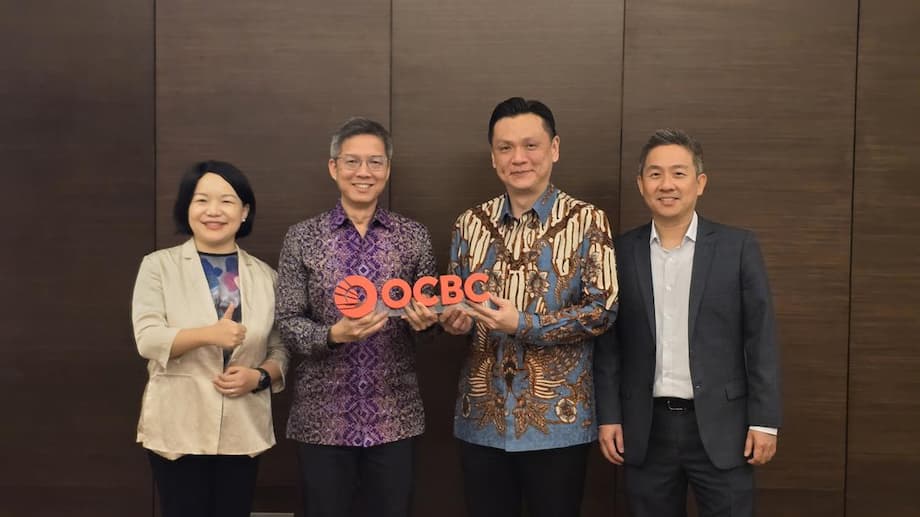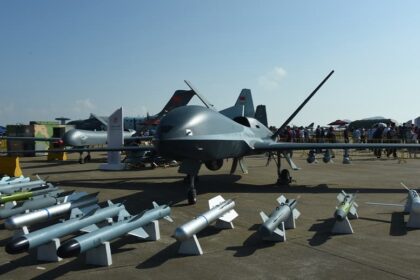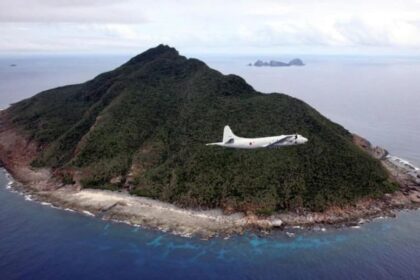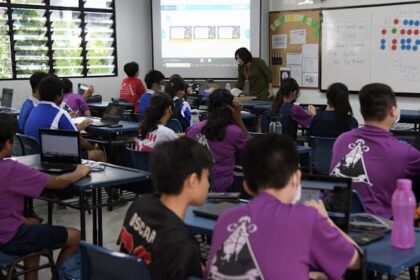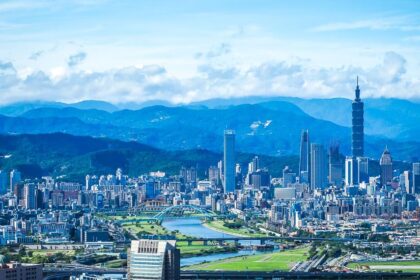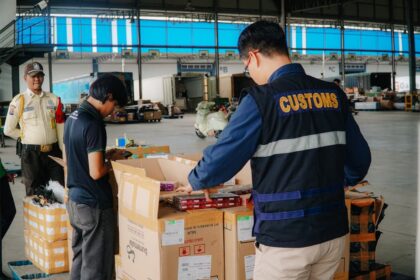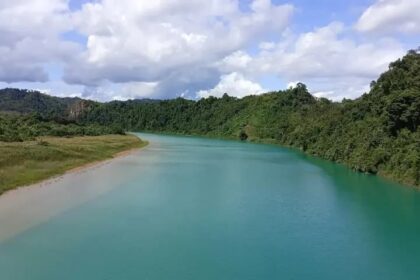Inside the new factory boom across the archipelago
Chinese producers are no longer satisfied with shipping finished goods into Indonesia. A growing number are building plants from West Java to Sulawesi, betting on a large consumer market and the promise of faster, more resilient supply chains. At OCBC Indonesia’s One Connect Forum in Jakarta, bankers and executives say the conversation has moved from basic distribution to factory sites, permits, and local partners. The shift comes as Indonesia recorded 1,714.2 trillion rupiah in total investment in 2024, a rise of 20.8 percent year on year, according to figures shared at the event. China accounted for 121.6 trillion rupiah of that sum, about 14 percent of all foreign investment, which made it the third largest source after Singapore and Hong Kong. The government is seeking to keep this momentum. It has set a target of about 8 percent annual economic growth in 2025 to 2029, with priority sectors that include renewable energy, semiconductors, the digital economy, healthcare, and export oriented manufacturing.
- Inside the new factory boom across the archipelago
- What is driving the pivot from exporting to building factories
- Where the money is going
- Indonesia’s policy mix that lures factories
- Tariffs, trade rules, and the export play
- Banking on the China corridor
- Benefits, jobs, and local headwinds
- What could slow or speed the investment wave
- The Bottom Line
Executives say the draw is simple. Indonesia offers a population that is expected to approach 300 million within five years, a fast growing middle class, and a chance to get close to end customers. Policy changes also matter. Local content rules and procurement preferences have nudged suppliers to produce inside the country. Medical device maker Wego, for example, entered a joint venture with Indonesian firm Oneject in 2025 after Jakarta increased support for locally made products. Chinese manufacturers also see Indonesia as a springboard to overseas markets. Tariff talks with the United States have made Indonesia a practical export base for some product categories, with final tariffs at about 19 percent in certain cases. Tax incentives, industrial land, and a large pool of workers add to the appeal.
What is driving the pivot from exporting to building factories
Global trade tensions have nudged companies to rethink where they make things. The first wave came with the US China tariff fight that began in 2018. A second wave followed during the pandemic, when lockdowns and shipping disruptions exposed how fragile single country sourcing could be. A third force is regulatory scrutiny in markets like the United States and the European Union. Products with too much China content face higher duties or rules of origin challenges, so producers have begun to split supply chains across Southeast Asia to qualify for better access.
Research outfits tracking factory footprints see the effect in the numbers. Rhodium Group, which monitors Chinese investment, wrote in an April 2025 note that companies have been moving capacity into the region to hedge against trade barriers and political risk.
Since the first US China trade war, ASEAN has become the main destination for firms diversifying supply chains away from China.
The same analysis warned that tariffs above 30 percent on China origin goods would weigh on the region if those duties extend to exports that rely heavily on Chinese inputs. That risk is pushing investors to increase genuine local content, source more from regional suppliers, and manufacture more intermediate components inside ASEAN.
Where the money is going
Manufacturing is the main magnet for new Chinese capital in Indonesia, with activity that spans heavy industry and consumer goods. Nickel and electric vehicles lead the pack. So do solar and glass materials, power equipment, electronics, and logistics. Flagship projects have reshaped entire districts. The Morowali and Weda Bay industrial parks link mines, smelters, chemicals, captive power, ports, and worker housing in one integrated campus. The Jakarta to Bandung high speed railway is the headline transport project. On the consumer side, brands from autos to electric bikes are deepening their presence.
Nickel, batteries and electric vehicles
Indonesia now supplies roughly 65 percent of global refined nickel, a metal used in many electric vehicle batteries. Chinese firms control an estimated three quarters of refining capacity inside Indonesia, according to independent researchers. The scale sets technology standards and feeds a growing battery and vehicle industry. BYD has committed around 1.3 billion US dollars for a factory in West Java with planned capacity of about 150,000 units a year, and Chinese backed suppliers are adding cathode and precursor lines near existing smelters. Local assembly by Wuling and Chery is expanding. Officials have also promoted battery recycling as another link in the chain.
Renewables and the power grid
Indonesia wants 34 percent of its electricity to come from renewable sources by 2030. Chinese companies have signed billions of dollars worth of agreements to help meet that goal, especially in solar modules, hydropower, battery storage, and grid digitalisation. Xinyi Glass Holdings announced an 11.5 billion US dollar investment in a quartz sand processing complex that supports solar glass production. LONGi opened a solar panel plant near Jakarta. State utility PLN has signed memorandums with Chinese firms for renewables and smarter grids worth tens of billions. Progress has been faster than Western backed packages like the Just Energy Transition Partnership, which has struggled to mobilise finance at speed. That pace brings benefits, but it also raises questions about oversight and environmental safeguards.
Transport, digital, and industrial parks
The Jakarta to Bandung line entered service in 2023 after a build that faced cost increases and schedule changes. In parallel, Chinese firms continue to fund roads, ports, and industrial estates. Indonesia has promoted 81 projects across real estate, tourism, agro industry, renewable energy, and logistics that require around 239 trillion rupiah in investment. The digital economy is another bright spot. Data center demand in Greater Jakarta has surged and Batam is emerging as a regional hub as Singapore caps new capacity. E commerce platforms, device makers, and cloud providers from China are active across this segment.
Indonesia’s policy mix that lures factories
Indonesia has spent a decade reworking the rules that shape foreign direct investment (FDI). The ban on raw nickel ore exports, in place since 2020, forced mining companies to refine ore onshore. A Positive Investment List now spells out where foreign owners can participate and on what terms. A newer risk based licensing system aims to speed permits for low risk businesses. Special economic zones and industrial estates offer fiscal incentives, while income tax discounts reward large manufacturers that commit over a set number of years. The value added tax rate rose to 12 percent, and local content requirements, known as TKDN, are being updated in sectors from power to medical devices. Companies that structure projects around these rules tend to move faster from plan to production.
- Income tax discounts for large industrial projects
- Customs and VAT facilities for import of capital goods for qualifying investors
- Access to serviced land in industrial estates and special economic zones
- Risk based licensing to streamline permits for lower risk activities
Policy shifts are one side of the story. External pressure is the other. The Asia Society Policy Institute has warned that ASEAN is drawing more Chinese offshore capacity at the same time that the United States and Europe are increasing scrutiny of goods tied to China supply chains.
ASEAN is becoming a key offshore manufacturing base for Chinese companies, especially in clean energy, but this puts the region in the crosshairs of global trade responses to Chinese overcapacity.
For investors, that means stricter rules of origin checks, more documentation on local content, and closer compliance teams that can track supplier inputs across multiple tiers.
Tariffs, trade rules, and the export play
One reason many firms assemble in Indonesia is the tariff math. When a product can meet rules of origin thresholds in trade agreements like the ASEAN China Free Trade Area (ACFTA) or the Regional Comprehensive Economic Partnership (RCEP), it can qualify for better access across Asia. Where exports are bound for the United States, some Indonesian shipments can face final tariffs near 19 percent, which is lower than China origin rates for equivalent goods. The details vary by product and remain subject to change, so companies hire customs advisers to map every component. Tighter rules in Washington and Brussels also demand clear proof that final goods made in ASEAN are not simply relabelled China origin items. To manage that risk, Chinese companies increase local sourcing, move more processes like casing, testing, and packaging into Indonesia, and use third party audits to verify origin.
Financing and deal structuring add another layer. Hong Kong serves as a major channel for Chinese capital into Indonesia. Banks and law firms there provide listing venues, project finance, and specialised services that ease cross border flows. Many Chinese investments recorded under Hong Kong or Singapore ultimately land in Indonesian factories, which can understate China direct numbers in official data.
Banking on the China corridor
Banks have built teams to capture the wave. OCBC Indonesia says its China desk expanded its corporate customer base by about 50 percent year on year, providing accounts, trade finance, and foreign exchange to mainland clients that are now building local operations. The bank expects more of its income to come from these customers as projects move from ground breaking to production. Indonesian lenders with offices in Hong Kong also report a busy pipeline as auto makers, glass producers, and petrochemical suppliers firm up sites in West Java and beyond.
Benefits, jobs, and local headwinds
New factories bring jobs, export earnings, and supply chain knowledge. Downstream processing of minerals keeps more value inside the country. Local partners gain access to technology and quality systems that can lift small suppliers. Early movers enjoy scale advantages when entire industrial parks cluster suppliers in one place. These are the reasons officials embrace the trend and compete for more investment.
There are risks to manage. AidData, a research lab that tracks Chinese investment and development finance, estimates that more than 90 percent of China state backed finance to Indonesia since 2000 came as debt. It also counts 94.1 billion US dollars of private Chinese FDI since 2010, much of it in energy, transport, and critical minerals. The lab notes that some projects faced delays, cost overruns, and environmental or social challenges. The Jakarta to Bandung line opened four years later than planned and went over budget, which required Indonesia to shoulder more debt. In nickel hubs, smelters built with Chinese partners often run on coal power and have raised concerns about air quality, water use, and worker safety.
The AidData team summed up this pattern in a recent review.
Energy and transport projects are particularly risky, facing more delays and environmental, social, and governance challenges.
Market risk has become more visible too. Indonesia owns a large share of the nickel market. Extra supply has pushed prices down, which benefits battery buyers but squeezes some producers. Despite the scale of refining, Indonesia still makes a tiny share of finished batteries for cars. Building that capability takes time, steady power, and stricter traceability to meet rules in the United States and the European Union. Labor relations also need attention in some mining districts, where local communities worry about safety, wages, and environmental harm. Government agencies say they are tightening oversight and pushing for cleaner smelting technology to reduce pollution.
What could slow or speed the investment wave
Three variables stand out for Chinese FDI in Indonesia in the years ahead.
- The tariff gap between China and ASEAN. If the United States keeps higher rates on China and ASEAN rates stay lower, it encourages more production in Indonesia. If the gap narrows, fewer factories will be moved.
- Scrutiny of Chinese content in ASEAN exports. More aggressive rules of origin checks and anti circumvention cases could deter exports that rely heavily on China inputs, which would force firms to localise more or rethink plans.
- The health of China’s economy and policy on outbound investment. Weaker profits at home or tighter controls could slow new projects abroad, while a rebound could sustain them.
Domestic policy will matter just as much. Clearer local content rules, faster licensing, reliable power, and cleaner industrial parks will influence where investors place their next lines. Demand will shape choices too. Electric vehicle sales in Indonesia are growing from a low base, and charging networks are still being built. Companies that export will keep a close eye on trade remedies in target markets and adjust sourcing to protect access.
The Bottom Line
- Chinese firms are moving from export models to local manufacturing in Indonesia to reach customers and manage tariff risk.
- Indonesia booked 1,714.2 trillion rupiah in investment in 2024, with China contributing 121.6 trillion rupiah, about 14 percent of foreign inflows.
- Priority sectors include renewable energy, semiconductors, digital services, healthcare, and export oriented manufacturing.
- Nickel and electric vehicles anchor heavy industry, with BYD building a major plant and Chinese firms controlling much of refining capacity.
- Energy projects and grid upgrades are advancing with Chinese backing, raising both opportunity and oversight concerns.
- Hong Kong is a key conduit for Chinese capital that ends up in Indonesian factories and infrastructure.
- Rules of origin, tariff differentials, and stricter checks in the United States and Europe shape export strategies.
- Benefits include jobs and technology transfer, while risks include environmental harm, price pressure in nickel, and project delays.
- The next leg of investment depends on tariff policy, scrutiny of Chinese content, and regulatory clarity in Indonesia.


